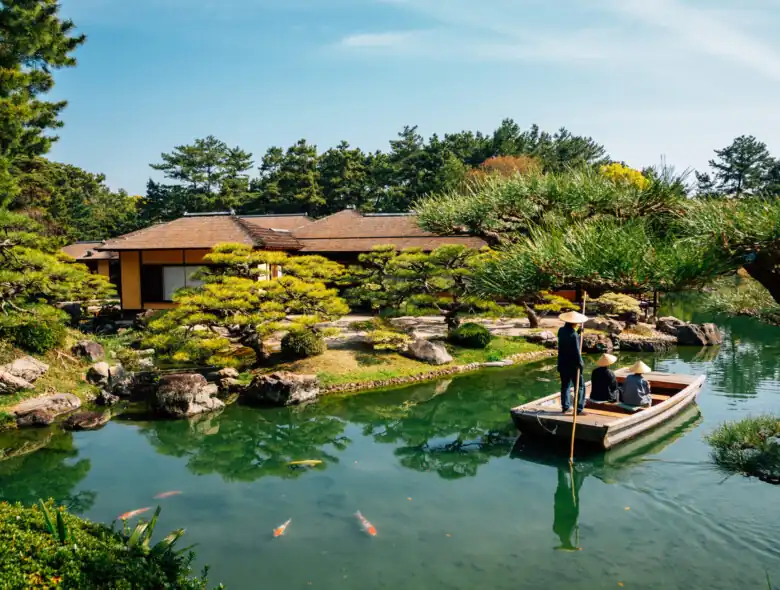Kagawa Prefecture resides in the northeast of Shikoku Island, which is across from Okayama and is connected to the mainland by the Great Seto Bridge. It is considered to be Japan’s smallest prefecture as it only encompasses 1,877 square kilometers. Kagawa is known for being the final destination point for the Shikoku Pilgrimage route, which takes pilgrims past 88 temples.
Kagawa boasts 8 cities, with its capital being Takamatsu. The other cities include Higashikagawa, Kan’onji, Marugame, Mitoyo, Sakaide, Sanuki, and Zentsuji.
Those looking to embark on an off-the-beaten-path holiday filled with art, tranquility, and culture, should read on to see what this tiny but mighty Japanese prefecture has to offer. Additionally, you can also visit the prefecture’s official website for more information. Lastly, if living somewhere quiet and bursting with nature seems appealing to you, why not check out Village House, a real estate organization with over 1,000 properties across Japan’s 47 prefectures?
Ritsurin Garden
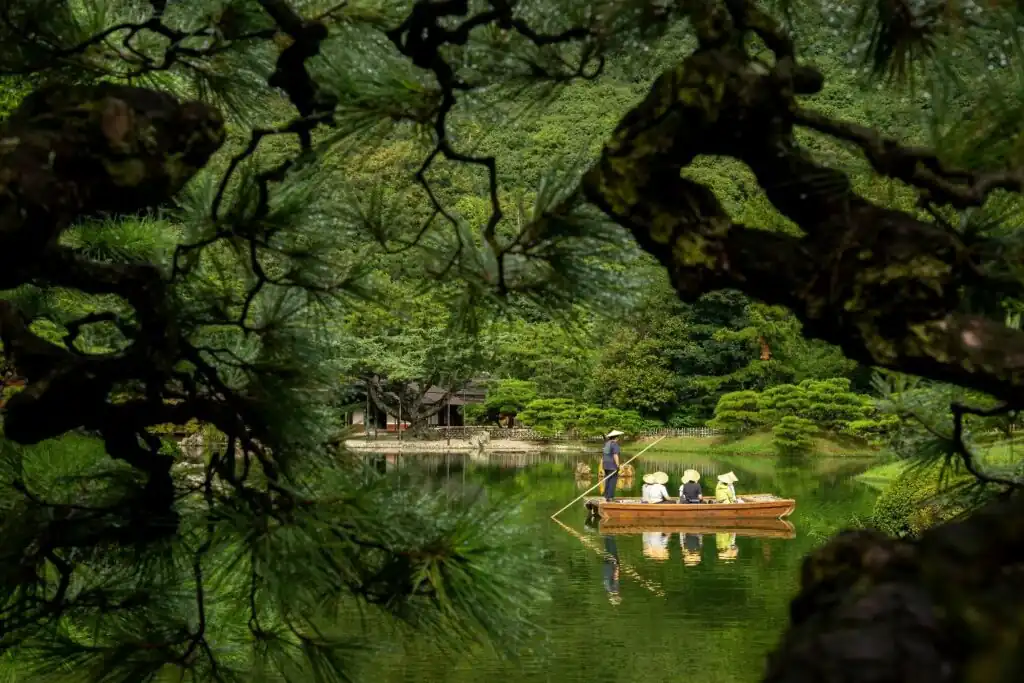
Ritsurin Garden is a landscaped park and garden built in the Edo Era and is Japan’s largest Cultural Property Garden. This makes it an important cultural asset going back 400 years and it has been awarded 3 stars in France’s Michelin Green Guide Japan, which is the highest rating.
Located in Takamatsu, Kagawa’s capital city, the garden was completed in 1745 and began life as a strolling garden and villa for the area’s feudal lords. It became open to the public a hundred years later in 1875.
Ritsurin Garden is one of Kagawa Prefecture’s major tourist attractions and features 6 ponds, 13 landscaped hills, and gorgeous rock arrangements along with a wide variety of flora that includes seasonal flowers and around 1,000 carefully maintained pine trees. The garden’s bonsai-esque pine trees are a staple feature of the garden even though its name, “Ritsurin” literally means “chestnut grove”.
The garden is open daily though operating hours vary depending on month and season. For more information, click here.
There is an admission fee of ¥410 for adults and ¥170 for children. You can also purchase an annual pass for ¥2,610 or a booklet of 11 tickets for ¥4,100. Admission is free on New Year’s Day (January 1st) and the garden’s opening day anniversary on March 16th.
Visitors wanting to learn more about the garden can rent an audio guide for ¥200. Languages include Japanese, English, Chinese, Spanish, and a few others. Visit the garden’s official website for more information.
To access Ritsurin Garden, it is a 20-minute walk from JR Ritsurin Station or a 3-minute walk from JR Ritsurin Koen Kitaguchi Station.
Kotohira-Gu
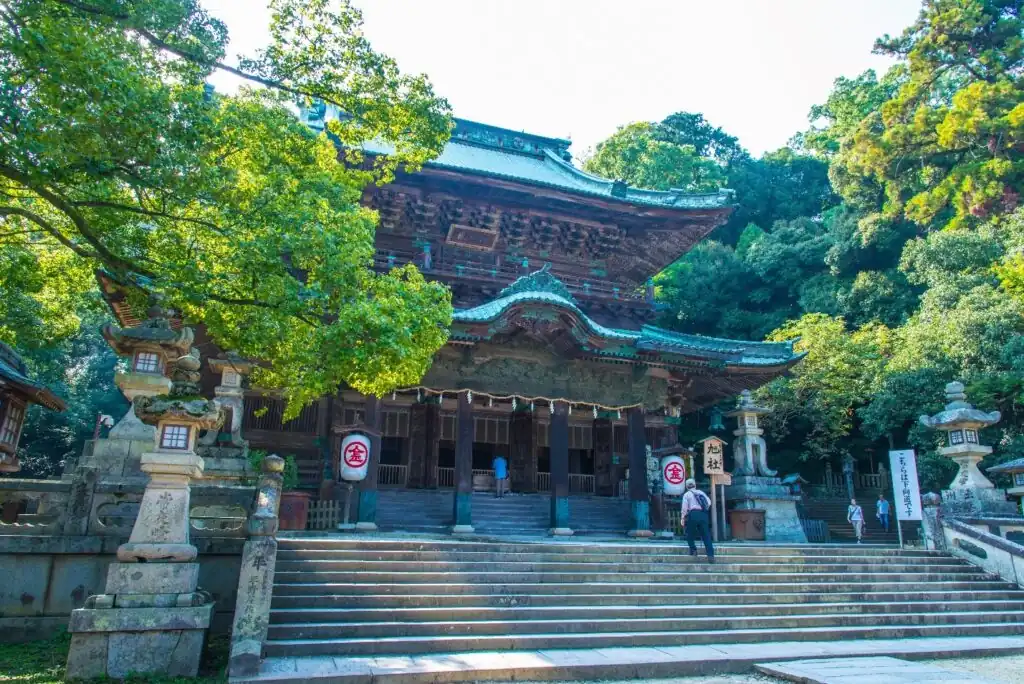
A Shinto shrine located in Kotohira is thought to be established in the 1st century. Kotohira-Gu shrine is the head shrine of “kotohira” or “konpira” shrines in Japan, which have been worshipped since ancient times as patron of sea ship transport and sailors.
It is located 521 meters, or 1,709 feet halfway up Mt. Zozu, and it takes 785 steps to reach the main shrine, and a total of 1,368 steps to reach the inner shrine. Along the way, the area is dotted with cafes, teahouses, souvenir shops, udon restaurants – Kagawa Prefecture is famous for its sanuki udon, which is square shaped with flat edges and a chewy texture – and a sake museum.
Additionally, the shrine is also dedicated to the gods of livestock, agriculture, and medicine, making it a popular shrine for people to visit to say their prayers.
The shrine is open to worshippers all year round and there is also a museum one can visit for ¥800. The nearest train station to Kotohira-Gu shrine is JR Kotohira Station. From there it’s a 10-minute walk. Visit the official website for more information. The website is only in Japanese but they have an article in English along with a pdf version to download.
Chichu Art Museum
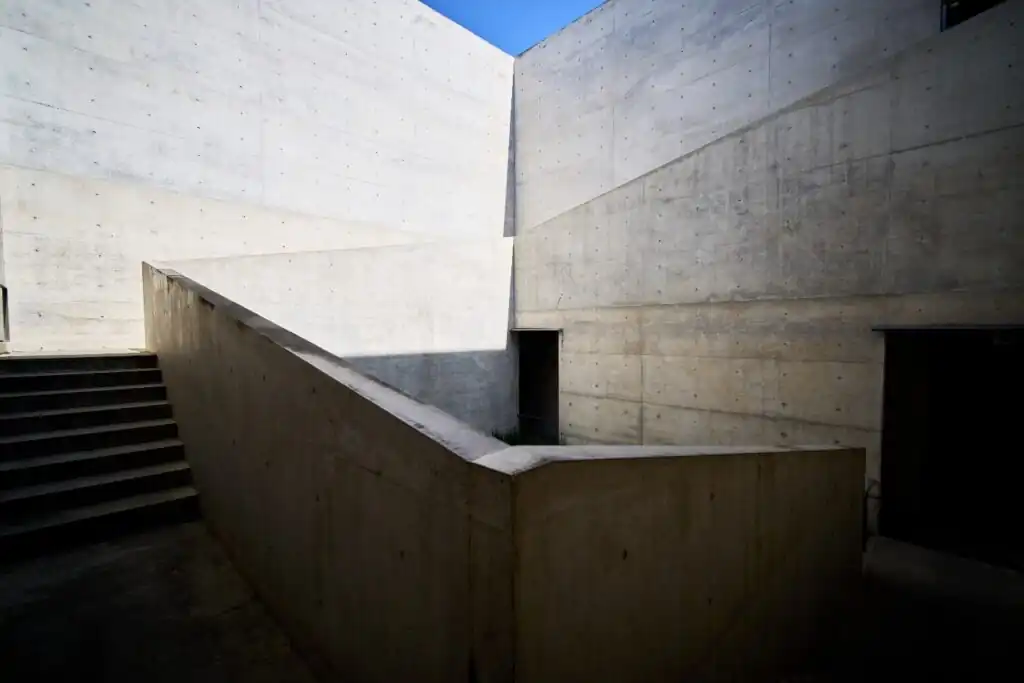
Literally translated to “Art Museum in the Earth”, Chichu Art Museum was built in 2004 to reimagine the relationship between nature and people by architect, Tadao Ando. It officially opened on July 18th, 2004, to the public.
The contemporary art museum is built mostly underground so as to not disturb or affect the surrounding natural scenery of the Seto Inland Sea. Instead, it somewhat blends in with its environment, a physical manifestation of harmony achieved between nature and people.
Inside the museum, visitors are treated to a permanent display of artworks by Claude Money, James Turrell, and Walter de Maria, all of which are illuminated using natural light.
Visitors to the museum are limited to 8 per time slot, so to ensure a better experience, those wanting to visit should book their tickets online here.
Tickets purchased online cost ¥2,500 while those purchased on-site cost ¥2,800 on weekdays. Prices go up on weekends to ¥2,700 for tickets purchased online and ¥3,000 for those purchased on-site. Those under the age of 15 are granted free admission.
To get to Chichu Museum, there are 1 to 3 buses per hour from Miyanoura Ferry Terminal via Honmura to Tsutsujiso bus stop, which is located at the east gate of the Benesse House. Buses cost ¥100 and the journey takes around 10 minutes. Alternatively, you can take a 30-minute stroll to the museum or make use of their free shuttle bus.
More information on the museum can be found on its official website.
Teshima Art Museum
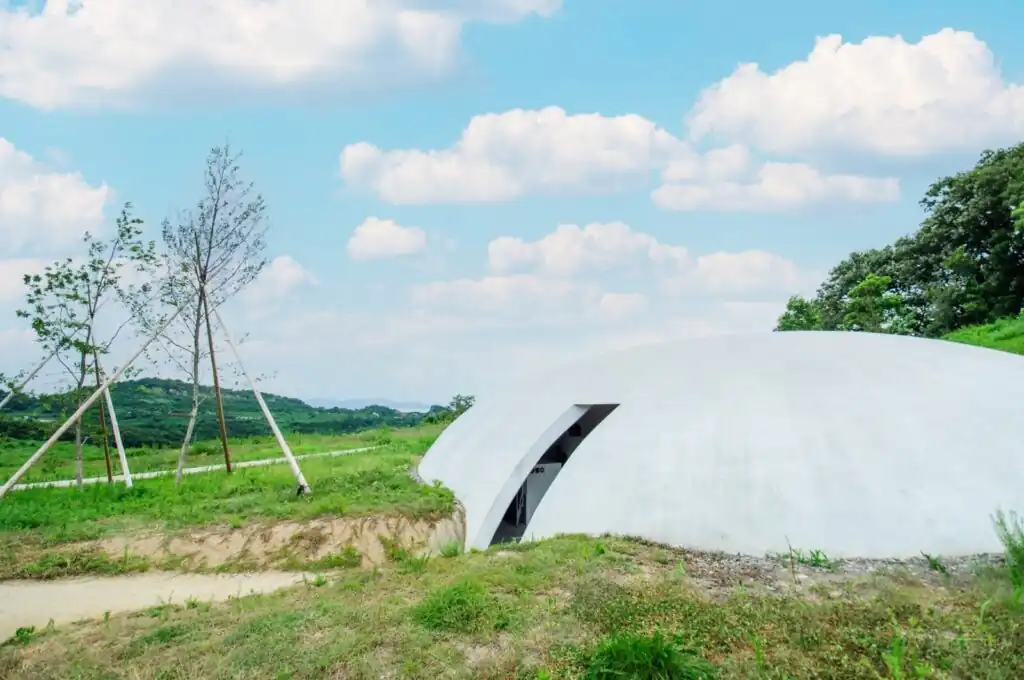
Teshima Art Museum is a museum in Tonosho and stands on a hill that overlooks the Seto Inland Sea. Conceptualized by Tokyo-based architect, Ryue Nishizawa and Japanese artist Rei Naito, the museum initially opened in 2010 for the Setouchi International Art Festival and beautifully resembles a water droplet at the moment of landing.
The museum is located in the corner of a rice terrace that was restored with the help and collaboration of the area’s local residents. The museum’s structure measures 40 meters by 60 meters with a maximum height of 4.5 meters. The low-concrete shell structure stands without pillars or columns to hold it up.
Aside from the museum itself, there are facilities such as a café and souvenir shop, adjacent to it. The café offers snacks made with locally grown rice and drinks containing ingredients from local fruits.
The museum is open from 10 am to 5 pm from March 1st to September 30th and from 10 am to 4 pm from October 1st to the last day of February. Bear in mind that the museum is closed on Tuesdays during the summer period (March to November) and Tuesdays and Thursdays during the winter period (December to February). More information can be found here.
The price of admission is ¥1,800 online and ¥2,000 on-site. Children under the age of 15 get in free. Tickets can be purchased online here.
To get to the museum and around Teshima Island itself, you can make use of the shuttle bus which costs ¥200 for adults and ¥100 for children. You can check the shuttle bus timetable here.
Marugame Castle
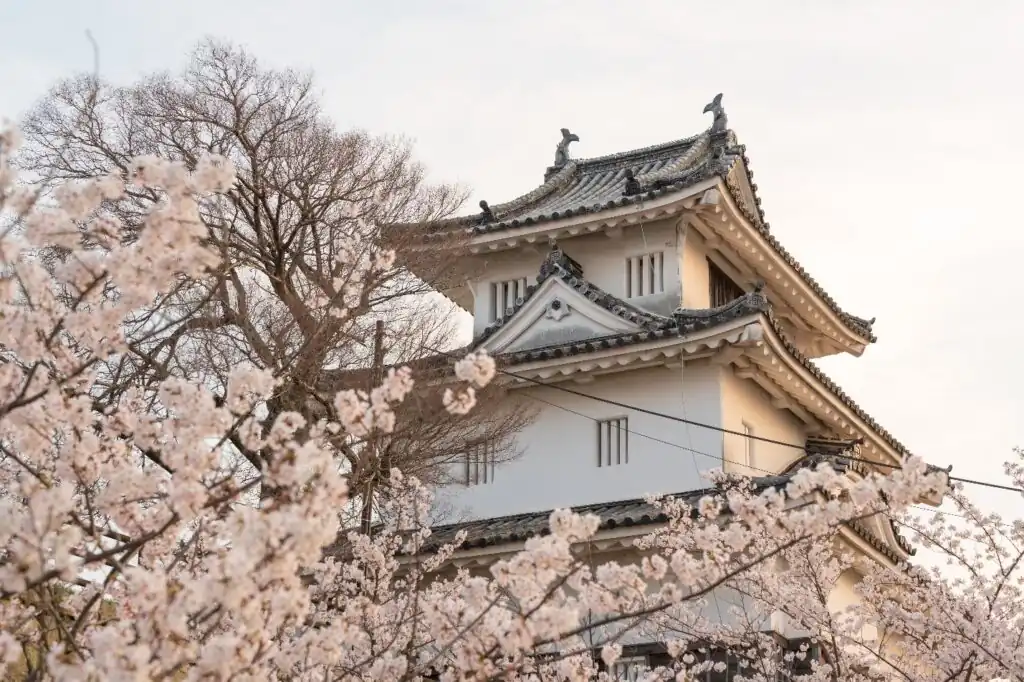
Marugame Castle is an Edo Period Japanese castle located in the city center of Marugame on Kameyama Hill and has been protected as a National Historic Site since 1953. It is also one of the 12 original castles in Japan to have its original wooden tenshu built before 1860 still standing. The castle boasts 400 years of history and has the tallest stone walls of any castle in Japan, hence its nickname, “Castle of Stone”. Marugame has also been awarded the title of “100 Famous Castles of Japan” by the Japan Castle Foundation.
The castle was originally constructed from 1597 to 1602 by feudal lord, Ikoma Chikamasa, who also constructed Takamatsu Castle. However, due to a new shogun policy that limits the number of castles per province to just one, Marugame Castle was torn down a decade after it was completed, and then rebuilt in 1660 after the province was divided into two.
Aside from the castle itself, one of its biggest attractions is its cherry blossoms – there are around 1,000 cherry trees planted around the walls and castle keep. This makes the castle and area one of the most famous and popular cherry blossom viewing spots for the region, and there is an annual cherry blossom festival held on the castle grounds from late March to early April.
To get to the castle, visitors need to take a train to JR Marugame Station and then walk 15 minutes from there. There are also buses from the station to the castle that take around 5 minutes and cost ¥200. Get off at Marugamejo-mae bus stop. The castle is free to enter save for the castle tower which has an entrance fee of ¥400, and it opens from 9 am to 4.30 pm.
You can find more information about the castle on its official website.
Related articles:
- Shimane Prefecture: A Journey Through History, Spirituality, and Scenic Beauty
- Your Guide to Fukui Prefecture: 5 Must-See Travel Destinations
- Your Guide to Fukui Prefecture Part 2: Even More Must-See Destinations
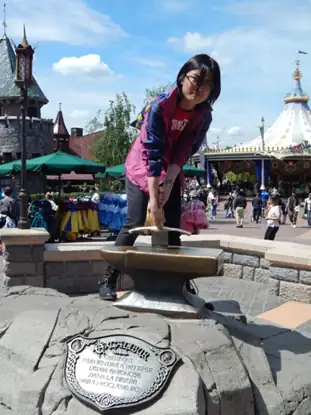
Freelance writer with over 2 years of experience writing for the Village House Blog, ESL teacher, and digital nomad who has lived in countries including The Czech Republic, The UK, The U.A.E., Japan, and most recently, Georgia. Is constantly on the hunt for the best, most optimal apartment for remote work when not enjoying going to film festivals, concerts, and the theater.


